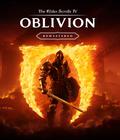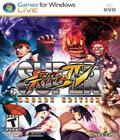Originally released in 2009, Street Fighter IV was a critically acclaimed reboot of Capcom's classic Street Fighter franchise. Ostensibly set sometime before Street Fighter III, the story didn't matter as much as the gameplay, and that is an area where it excelled. A year later, Capcom released an updated version of the game (dubbed Super Street Fighter IV) with additional characters, features and a rebalancing of the move set. Unfortunately for PC gamers, the 2010 release was console only. As a result, Super Street Fighter IV Arcade Edition is something of a massive update for PC players, bundling in all of the latest content into one retail title.
Unlike the console side, where Arcade Edition is available as a standalone disc or a discounted DLC update for Super Street Fighter IV, it's all or nothing on the PC.
For those gamers coming from vanilla Street Fighter IV, a lot has changed. Characters no longer need to be unlocked, every character has been rebalanced, there are now two selectable ultra combos, the character roster has increased from 25 to 39, there are cut scenes for both prologues and endings, bonus stages have been added back into the game, challenge mode has morphed into trial mode and online play has gotten a complete revamp. If you've played Super on the consoles, then much of this will be familiar, but if vanilla is all you know, then Arcade Edition is like an entirely new game.
The 10 fighters included with Super are Adon, Cody, Dee Jay, Dudley, Guy, Ibuki, Makoto, T. Hawk, Juri and Hakan. The first eight are from previous Street Fighter games while Juri and Hakan are new to Super. Juri is quick and focused on ranged kicks while Hakan is something like a faster Zangief.
Arcade Edition sees the introduction of Evil Ryu, Oni and the twins from Street Fighter III, Yun and Yang. Evil Ryu plays like his traditional namesake, although enhanced with some of Akuma's abilities. Oni looks like a flaming Akuma, blessed with an incredibly versatile move set including a mid-air super and two different fireballs, one of which can be charged for extra distance. Yun and Yang handle similarly, focusing on speed above all else.
Having a second ultra combo available for each character is a welcome addition, as choosing the ultra can be a strategic move when facing off against another player in versus mode. Capcom did an excellent job of providing ultras that vary in range and scope, so that the second isn't just a carbon copy of the first.
Specific to the PC version of Arcade Edition is how well the game scales across different types of hardware. If you have a high-end desktop, it's possible to run the game in incredibly high resolutions with a glorious level of eye candy. Running at 1600 x 1200 with full antialiasing, 8x filtering, high-quality models, motion blur and particle effects all turned on, the PC version of Arcade Edition blows away any console version of Street Fighter IV. For those with super high-end systems, Arcade Edition even supports a full 3-D mode.
Assuming you don't have a monster rig, the game also scales down nicely. Arcade Edition is GPU bound, so any performance limits are tied directly to your video card. With all of the effects turned off and the resolution at a paltry 800x600, we were able to play Arcade Edition on a laptop with nothing more than an integrated Intel HD graphics chip. With everything turned off, you miss out on the backgrounds (every stage simply appears as a set of flat, black rectangles), but the characters are fully rendered. Basically, when the effects are turned down, the game only displays the essentials.
An integrated benchmark program helps you determine the performance level of any given set of settings on your hardware.
Control is key to any Street Fighter game, and this is one area where the PC version of Arcade Edition both excels and stumbles. It excels because, unlike many current PC games, it supports the older DirectInput control model as well as XInput. This means you can select from a bevy of PC-compatible control pads and are not limited to an Xbox 360 controller with its mushy d-pad. For the review, we used the Logitech Cordless RumblePad 2, and it performed flawlessly after the initial configuration. The only hiccup here is that Arcade Edition saves the controller configuration data to your individual profile; it's not a global setting. This means you have to log in before the controller buttons start working.
Although we didn't experience it, there is one issue with third-party controllers that has been widely reported, and that is the lack of support for the hat switch. Some PC joysticks map their d-pads to a hat switch, and Arcade Edition doesn't appear to recognize that input. Arcade Edition on the PC also does not support vibration feedback in contrast to its console brethren. In addition to the Logitech pad, we tried using a wired Xbox 360 controller as well, and vibration feedback was not available with either one.
When it comes to multiplayer, Arcade Edition supports both local play as well as online play via ranked matches, endless battle, team battle and tournament modes. Endless is the traditional "winner stays" mode, while team battle splits the players in a given lobby into two teams. The last team with a player left standing is the winner.
Games are matched up via Games for Windows Live, which is very similar to how it is handled on the consoles. The system appears to do an excellent job of matching players with high-quality connections, as lag was rarely a noticeable issue in our gaming sessions. Of course, don't expect to do well online unless you've practiced quite a bit. Beating the AI may feel like an accomplishment, but if you haven't played against a human, prepare to have your ass handed to you the first time you go online.
Practice is one way to better your skills, though a more interesting option is the replay channel. Mastering the moves is only halfway to getting good. You also have to know when to use them. The replay channel allows you to download replays of online matches to review your fights as well as fights between other players. Unfortunately, you cannot save a replay of a local match — only one that was done online.
Despite all the stuff Arcade Edition does right, there is one big oversight, and that is the game's inability to use the standard Super rule set. It's not a matter of the Super rule set not being available, as Arcade Edition automatically switches to it when you start Trial mode; it's just that the option to swap over manually is not exposed in the menu system. As this is available on the console side of things, its omission here is pretty blatant.
Then there is also the store issue. While Capcom should be commended for resolving the draconian DLC issue, the fact that different versions of the game have different DLC stores is annoying. For example, if you bought the game from GFWL Marketplace, costume DLC is available, but it won't work with versions bought from Steam. The Steam version of the game has a link to the Steam store, but there is no DLC available. It's a SNAFU that was likely driven by marketing decisions, but for the gamer, it makes no sense.
Coming from a PC-centric point of view, you should purchase Super Street Fighter IV Arcade Edition if you're a fighting game fan. All of the improvements are a massive upgrade from vanilla Street Fighter IV, with the redone online matchups almost being worth it on their own. Given that fighting games are generally focused on consoles, it's refreshing that Capcom made the effort to release its premiere title on the PC. So long as your joystick is compatible, the PC version of Arcade Edition is recommended.
Score: 8.5/10
Editor's Note: We'll be giving away PC, PSN and XBLA codes today (7/22/2011) for the Super Street Fighter IV Arcade Edition on the WorthPlaying Twitter feed. Follow us @WorthPlaying to win!
More articles about Super Street Fighter IV Arcade Edition











 Super Street Fighter IV Arcade Edition further redefines the fighting game genre with classic 2-D Street Fighter fighting action, a host of new and returning characters, beefed up online modes, and more.
Super Street Fighter IV Arcade Edition further redefines the fighting game genre with classic 2-D Street Fighter fighting action, a host of new and returning characters, beefed up online modes, and more.










